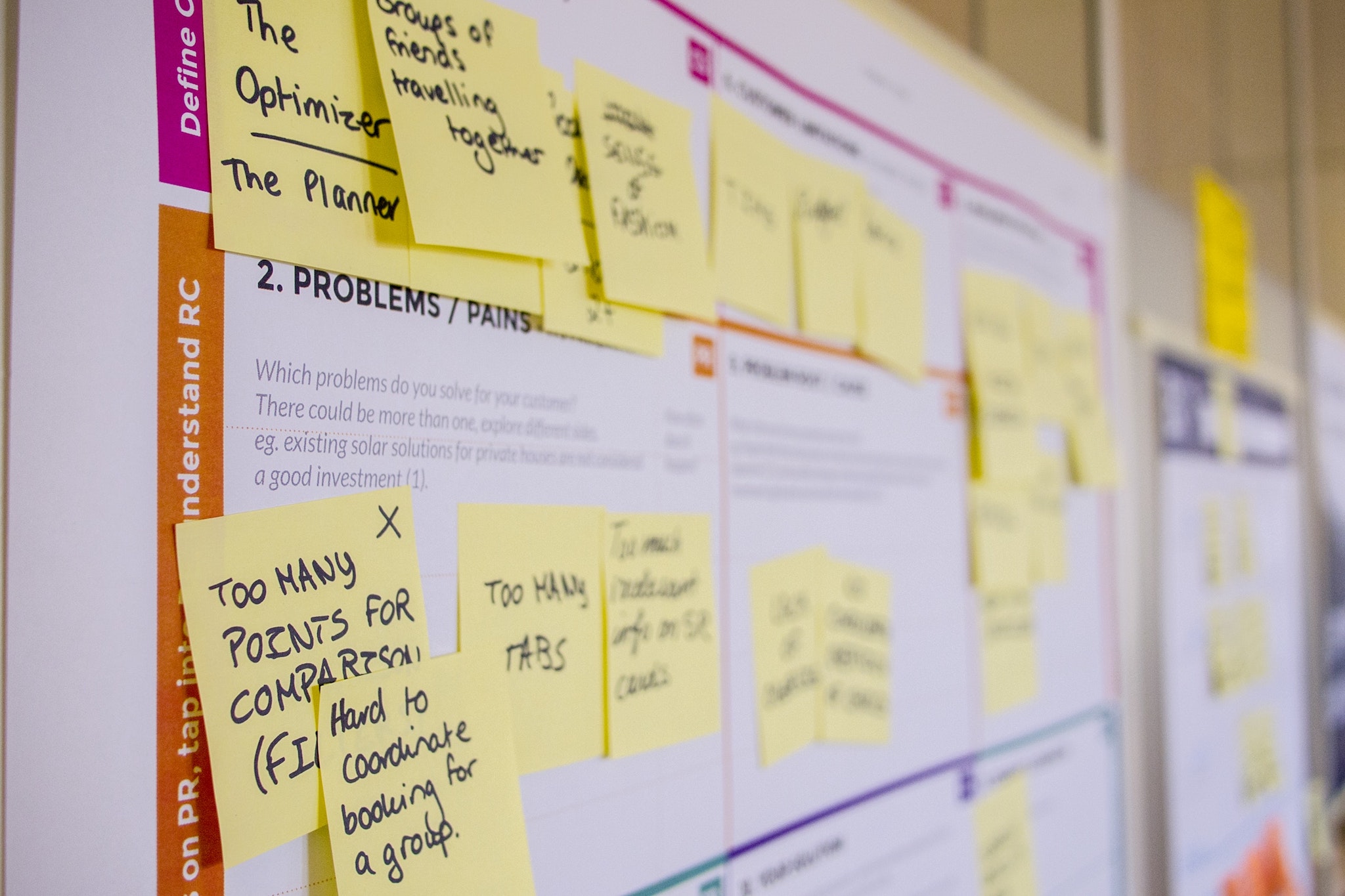Fortunately, we live in times in which a mind-blowing amount of knowledge is freely available. Gone are the days in which consultants and practitioners jealously guarded their “secret methods and tools” like a treasure. We have moved more than a few steps towards a global community of creating and sharing, of mutual enrichment, of teaching and learning (often both at the same time),of re-mixing, adapting, giving feedback and iterating.
A huge amount of knowledge is out there – you just have to know where to look and how to separate the really good stuff from the mediocre. And in the spirit of sharing: if you find the material useful, share the message, use it productively and in the real interest of your customers and the people you work with.
In this article, we present you with a curated list of some of the best design thinking resources we have found during the last years. If you know of any other resources we should include in the list, please drop us a message!
Toolboxes
d.school Stanford
Some foundational and classic material from one of the cradles of design thinking. In their own description: “We’ve curated a collection of resources from our classes and workshops for you to explore. Use these activities, tools, and how-tos as a starting point — we hope you’ll hack them for whatever challenge you’re working on.” Including the legendary Bootleg as well as a pretty comprehensive Reading List. The full overview is here.
Ideo.org / Design Kit
A plethora of first-class material which will make any design thinker’s mouth water… 🙂 Here, you will find an excellent list of methods, as well as the immensely useful 200-page “Field Guide to Human-Centered Design”. Articles and videos as well as inspirational case studies complete the picture.
IDEO / Design Thinking for Libraries
A result from a cooperation of IDEO and a few public libraries (funded by the Bill & Melinda Gates Foundation) is the “Design Thinking for Libraries Toolkit”. Chock full of how-tos, tools, case studies. Basically a complete guide to doing Design Thinking. Very comprehensive. You can get it here.
IDEO / Design Thinking for Educators
Out of the cooperation between IDEO and Riverdale Country School comes the 2nd edition of the “Design Thinking for Educators Toolkit.” Although targeted primarily at teachers, this toolkit is treasure trove of valuable knowledge on the method and has a plethora of tools described in detail.
Frog Design
The design firm frog has released the version 2.0 of their Collective Action Toolkit. Comprehensive and highly recommended!
IBM
And then, there is the “IBM Design Thinking Field Guide”. Here, IBM gives DT it’s only little twist, which you might regard as useful or not. In any case, a very useful collection of tools.
MOOCs
There is a multitude of free MOOCs (Massive Open Online Course) which focus on Design Thinking. Here are a few which we found to be useful:
+Acumen and Ideo.org: “Introduction to Human-Centered Design”
Focused on “human-centered design for social innovation”, but can be used in any context. Comprehensive and in-depth. It is recommended to take this course as a team.
open HPI: “Inspirations for Design: A Course on Human-Centered Research”
A good one with a strong focus on observing, exploring, gaining insight and inspiration, conducting and interpreting interviews; not a comprehensive course on the whole “design thinking” field, but valuable insights for the explorers of human needs and aspirations. Link.
University of Virginia: “Design Thinking for Innovation”
We recommend this one especially, because Jeanne Liedtka’s books (here and here) were among the first ones we read on the subject and have used them again and again since then. Although a little short on tools and sometimes maybe a tad too generic, this is still a great introduction. Learn more here.
Summing it up
There is a great deal of very high quality content available – for free. Even if all this may not completely replace a “hands-on” dive into the application of design thinking under the tutelage of active practitioners, there is more than enough to get you started and to supply you with a massive amount of inspiration, ideas, tools and how-tos.
And remember: although it is called design thinking, it is much more about doing!
